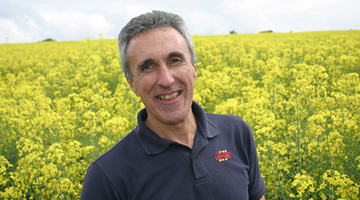Role: Independent Crop Establishment Consultant
Any farmer who expects a switch to direct drilling to sort out soil structure problems by itself needs to re-think their approach, and make sure they give this potentially valuable technique a go says independent consultant Philip Wright.
“Point number one: plan to start direct drilling where soil structure is already good. The biggest mistake you can make is trying to direct drill ropey fields.
“But if soil structure is not in good condition then you are relying on nature and plant roots to put it right, and that will take a number of years, during which time yields and margins will be lower than optimum”.
Rushing to judgement on the potential benefits of the technique on the basis of a trial in unsuitable conditions could lead to farmers rejecting it without giving it a chance: “Sometimes you may need to make a mechanical intervention. That may seem a little counter-intuitive, but if there is a problem that needs resolving then the right operation should help direct drilling work. Additionally there are other ways of giving nature a hand”.
He warns against starting to direct drill just because the technique seems to offer a low-cost option for establishing crops: “There is a real danger that if you don’t try the technique on soils that are already well structured then you may dismiss it on a false premise. If you do want to assess direct drilling on your own farm, choose a field that you know is well structured with no physical problems that may inhibit crop development, and give it fair trial.
“Ultimately nature will correct your soil structure problems, providing you don’t carry on creating them. Employing cover crops of the appropriate mix to help structure the soil also accelerates the move to good yields. Also, never miss the opportunity to build roots, as these ultimately provide resilience in all soils”.








